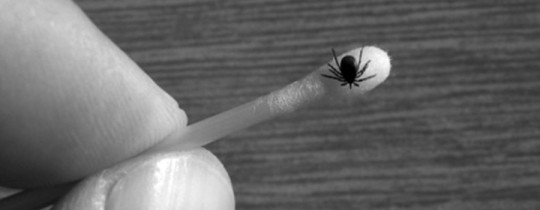Lyme Disease

Lyme disease is a type of infectious disease, more specifically a bacterial infection, which is known to be caused by three species of the genus Borrelia. Lyme disease is contracted through the bite of ticks infected with the bacteria, and is the most prevalent disease to originate from ticks in the Northern Hemisphere. Ticks contract the bacteria themselves by biting fauna such as deer and mice infected with Lyme disease. The ticks that can carry Borrelia and infect humans are the so-called “hard ticks” of the genus Ixodes. This includes the blacklegged tick, also called the deer tick, which is common is many places throughout North America. Lyme disease is common in the temperate zone, occurring in North America, Europe and Asia. The name Lyme disease comes from the towns of Old Lyme and Lyme in Connecticut, USA. There, in1975, numerous people were suffering from similar symptoms from an unknown ailment that would later be identified as Lyme disease. In humans Lyme disease can be effectively treated, however serious symptoms can arise, especially if treatment is delayed or inadequate.
Symptoms
Lyme disease symptoms generally occur in three stages, but not every patient will demonstrate every symptom. The first indication of infection is erythema migrans, or EM, a type of circular rash. This rash occurs in roughly 75% of cases, and appears at the location of the bite after a delay of between one day and one month. The rash (EM) can last for 8 weeks, and does not exhibit classic skin irritation symptoms such as itchiness, pain or swelling. Symptoms during this first stage include: swollen lymph nodes, joint and muscle pain, headache, fever, chills and fatigue. If left untreated during the first stage the disease will enter the second stage, termed early disseminated Lyme disease. This second stage can last several months, and the symptoms include: extreme fatigue and weakness, heart palpitations, arthritic symptoms, multiple rashes, and nervous system disorders. If the disease continues to be untreated the disease will enter the third stage (late disseminated Lyme disease), lasting from months to years. During this stage the symptoms include recurring neurological problems and arthritis. It is extremely rare for Lyme disease to cause death.
Prevention
To prevent the contraction of Lyme disease one must protect themselves from tick bites. Direct contact of ticks should of course be avoided, and extra care should be taken during the warmer months when ticks are most active (https://www.cdc.gov/lyme/prev/on_people.html). Ticks are commonly found in wooded areas, tall grasses and leaf litter. Avoiding these areas reduces the risk of being bitten, and as an example one could stick to the centre of trails as opposed to brushing along plants at the edges. When venturing into grassy and wooded areas, use insect repellent on clothing and exposed skin. Clothes can also be sprayed with permethrin, which kills ticks on contact. Furthermore, protective clothing such as long sleeves, hats and long pants tucked into socks or boots will make it more difficult for ticks to bite. Lighter colours will make ticks more visible should they manage to attach themselves. Ticks that have attached themselves are to be removed as soon as possible. Removing ticks within 36 hours of them biting highly reduces the risk of contracting Lyme disease. Finally, take extra care when handling outdoor pets and when letting them inside. Pets can easily spread ticks to you, or bring them into your home. Check yourself and your pets frequently for ticks, and remove any as soon as they are discovered. To remove ticks use tweezers, grasp its head and mouth as closely to the skin as feasible, and pull slowly without twisting or rotating.
Diagnosis and Treatment
As is the case for most infections, the sooner the treatment begins, the better. A person bitten by a tick must be observed diligently for symptoms for 30 days. A blood test that checks the blood for antibodies of Lyme disease causing bacteria can be performed to determine if a patient is infected. From there treatment is a course of antibiotics lasting 2 to 4 weeks. In persons who were recently bitten by a tick antibiotics may be administered in a single dose as a preventative measure. For this to occur, a nurse of physician must identify the tick as one that can carry Lyme disease, and it must be thought that the tick has been attached for more than 36 hours. The exact antibiotics administered depend on the symptoms and stage of the disease. In adults doxycycline is most common (except for pregnant women), while in children amoxicillin is generally used.
